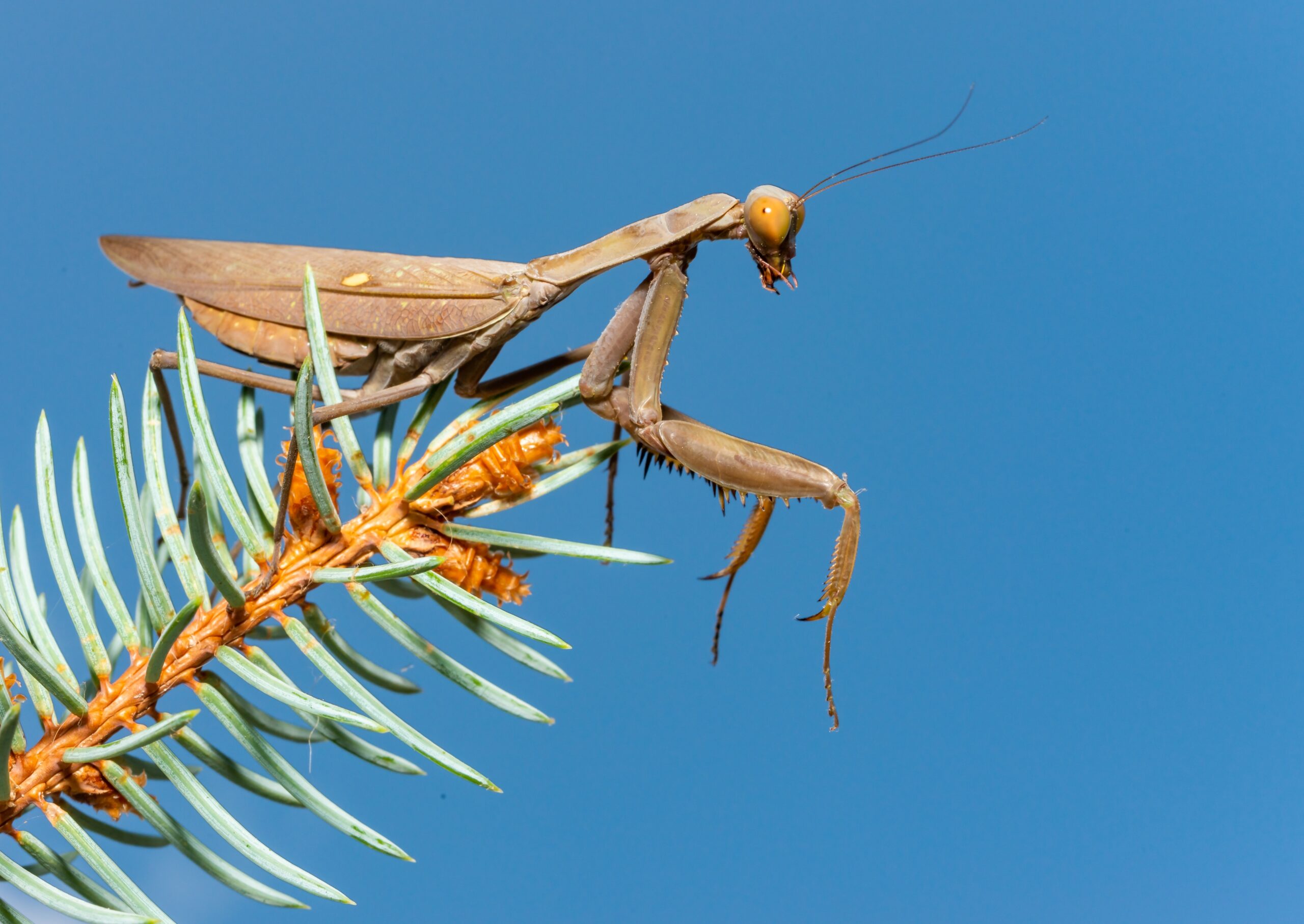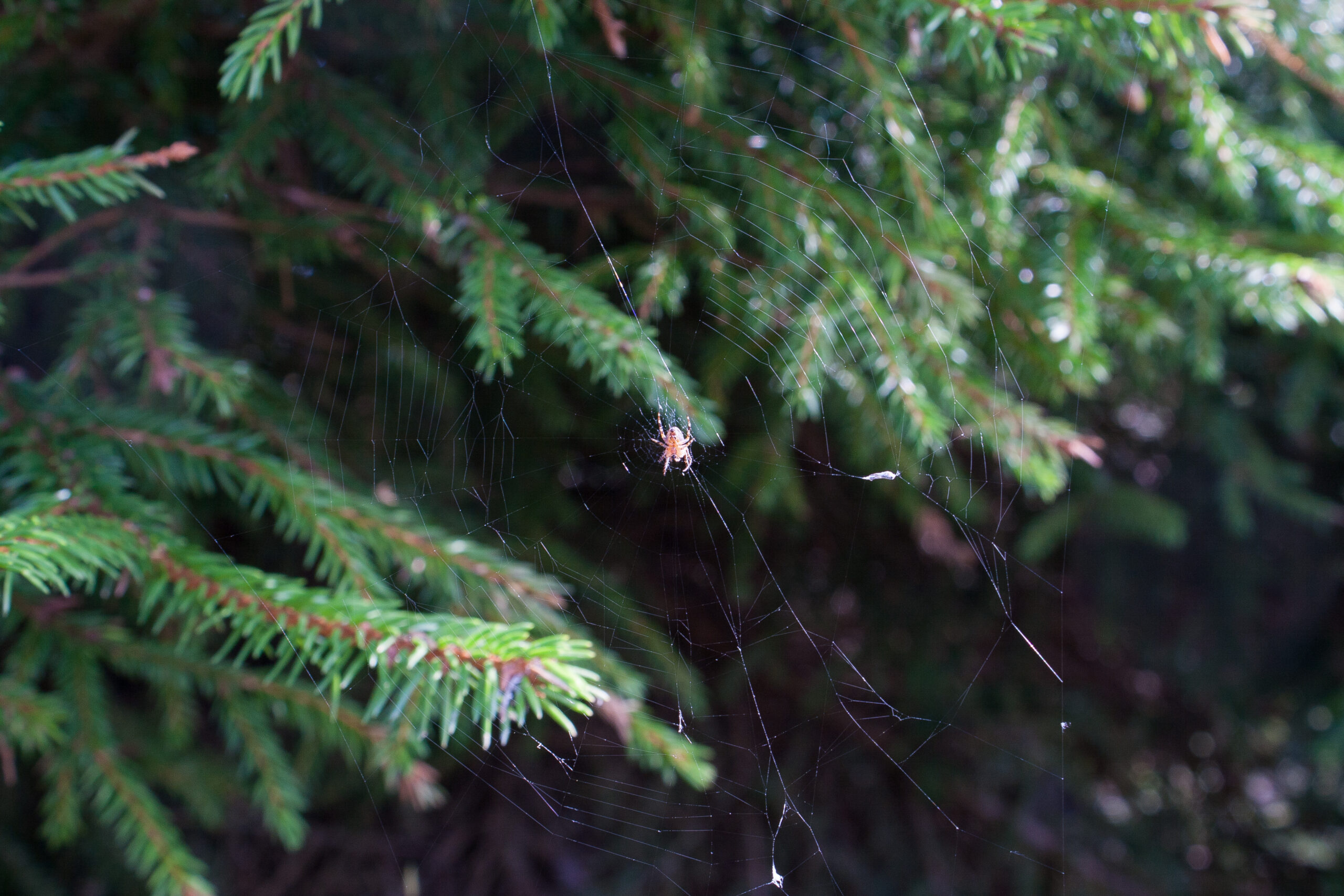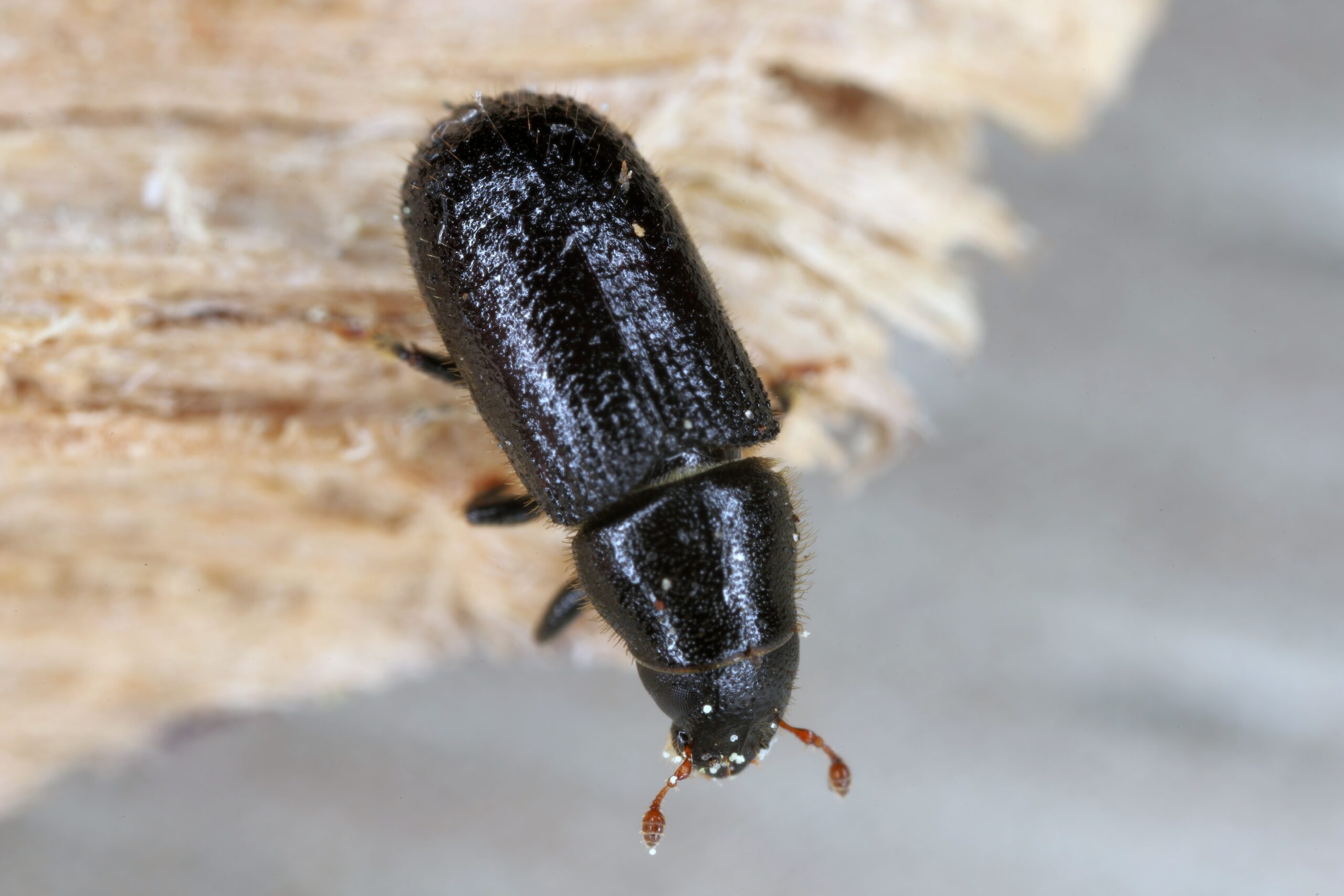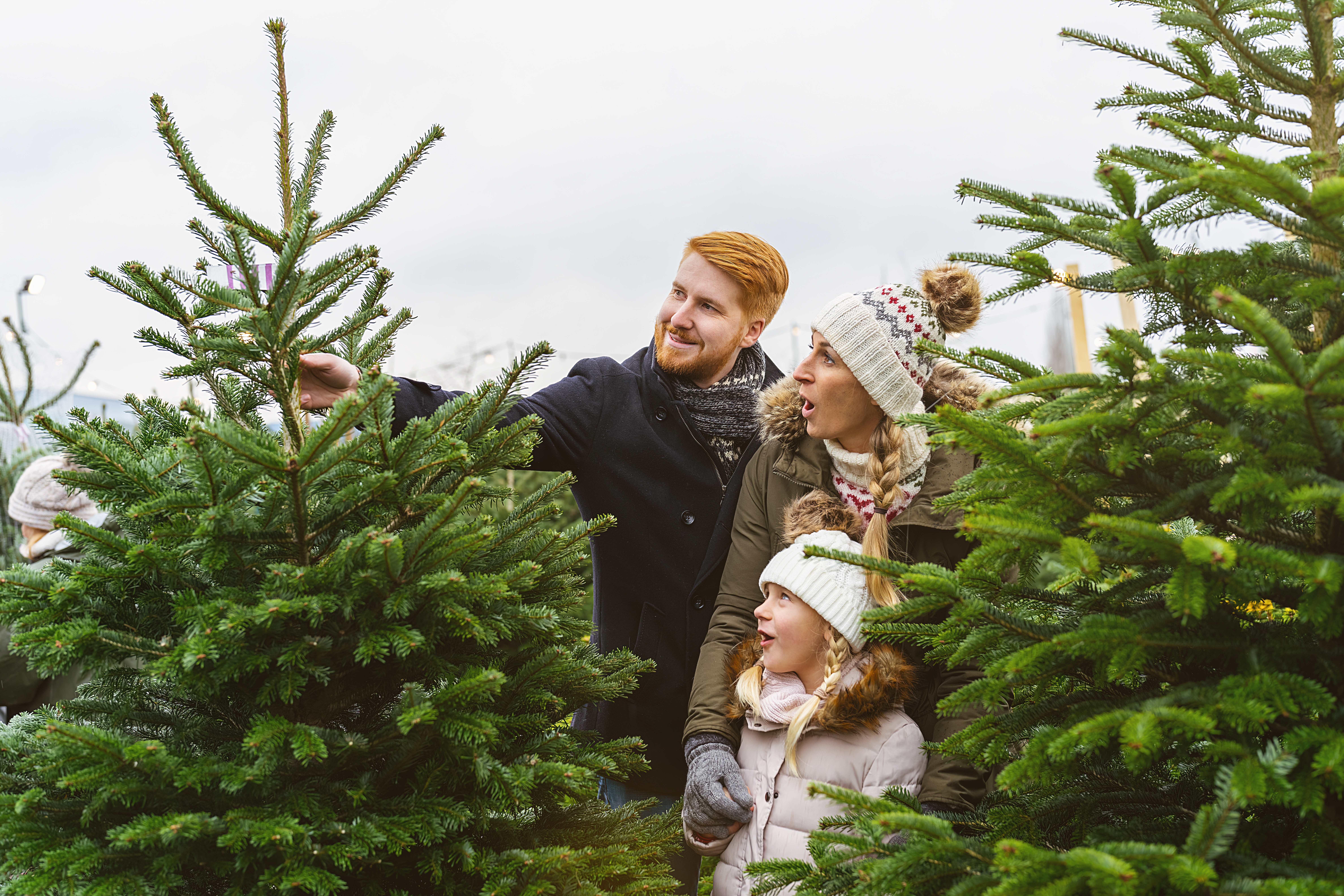How to Keep a Pest-Free Christmas Tree
How to Keep a Pest-Free Christmas Tree
With Thanksgiving in the rearview mirror, many U.S. households are beginning to set their sights on preparing for this Christmas season. The main focus of any space that is decorated for Christmas is undoubtedly the Christmas tree. Everyone has their own preferences when it comes to this holiday staple: real, fake, flocked, 10-feet-tall, tinsel-covered, bare, colored, decorated, etc. There are many perks to having a real tree, like the delightful smell and the experience of finding the perfect one. However, real trees also have a major concern that fake trees do not; trees that sit out in the forest or on a farm are likely to house at least one tiny critter for a certain period of time.
It’s better to be safe than sorry and make sure that your newfound Christmas tree is completely pest-free before bringing it inside your home. Let’s take a look at three of the most common Christmas tree pests before we discuss the most effective ways to ensure that your festive tree isn’t containing any hidden pests that are invading your home for the holidays.
Praying Mantises

Possibly the most common Christmas tree pest, praying mantises (or mantids) frequently invade these types of trees out in nature. The main reason is because they want to place their eggs in a safe place, like a healthy tree. Praying mantises lay their eggs in masses rather than continuously producing hundreds of tiny individual eggs. Think of the egg sacs that spiders produce. Instead of a silken covering that encases the spider’s eggs, praying mantids lay all of their eggs in a brown-colored mass that protects them from any threats. Each mass is about the size of a fresh walnut and typically found among the larger branches of the tree.
If a Christmas tree has a praying mantis egg mass and is brought indoors, that mass will hatch soon after. The warmth of the home will prompt the mass to split within a few weeks, revealing the 400 young nymphs that live inside. These new praying mantids will either spread out to search for food throughout the home or simply eat each other, as these predators often do with their own kind. These insects are harmless to us and are just focused on finding smaller insects to eat. But the thought of having hundreds of tiny praying mantises in the house is a full-on Christmas nightmare, so it is completely understandable to not want these pests indoors. If you want to keep these carnivorous insects alive elsewhere, you can carefully cut the branch that houses the egg mass and move it outside.
Spiders

Speaking of pests that are generally harmless to us, the types of spiders that invade Christmas trees aren’t usually the venomous species. In fact, they are often too small to see when you first bring the tree indoors. These carnivorous arachnids will eat any insects they find also living within the Christmas tree. Like praying mantises, spiders will place their egg sacs in a tree that lives outside for a long time. Female spiders will encase their eggs in protective silk, which serves to keep the eggs both warm and safe. There are often hundreds of eggs within one egg sac that will hatch sooner if they are brought into a warm house.
Once the young spiders hatch, they will either crawl all over the tree or expand their horizons by invading the rest of the home. These species are usually dark-colored, so they will blend in with just about anyplace that they live. If they stay in the tree, they may give away their position by spinning webs throughout the branches. These sticky strands are useful for catching prey but quite frustrating for people to remove. The spiders can also spin webs in other parts of the home, like in room corners and under furniture. Since most of these spiders originated outside, they likely won’t survive long indoors due to the increased temperatures and lack of reliable food sources.
Bark Beetles

This pest is a bit different from the other two purely because it is the least conspicuous pest of them all. Bark beetles act similar to carpenter ants and termites in that they all like to burrow as deeply into wood as possible. These beetles will eat into the natural wood of Christmas trees and hide underneath the bark on the trunk. They will damage the tree from the inside out if they are left alone, as the new holes will prevent the tree from retaining all of the nutrients and moisture that it otherwise would. Bark beetles actually prefer to invade trees that are already stressed or unhealthy because they can bore into the wood much more easily.
The name “bark beetles” technically applies to about 600 different insects that all like to burrow into natural wood, but they look very similar. The standard bark beetle has short legs and dark coloring — ranging from red to brown to black — with a length that is comparable to a grain of rice. They need humidity and damp wood to survive, so they can’t invade our wooden furniture because it’s far too dry for their liking. Just about every common Christmas tree is susceptible to bark beetles, as they typically invade pines, junipers, and white firs. If you see tiny holes and fine sawdust on your real Christmas tree, it is likely the work of some hungry bark beetles.
Make Sure Your Tree Is Pest-Free!

Anyone who has carefully selected a real Christmas tree will stress the importance of inspecting it before purchasing. No one wants a tree with yellowing branches or a major bare section in the back (unless it fits with your aesthetic), so it’s essential to examine the tree’s branches and needles to ensure that it’s in optimal health. That being said, you need to visually search the tree even more if you want to be completely sure that it is pest-free.
When you are choosing your real Christmas tree, we highly recommend doing these efficient tasks before bringing it inside your cozy home:
- Inspect the actual wood of the tree rather than just the green needles. Wood-boring pests like to burrow into the trunk and branches, and both spiders and praying mantids like to hide deeper in the tree’s branches. Check the trunk and branches for any signs of pests, such as small holes, sawdust, droppings, spiderwebs, egg sacs, and live insects.
- Remove any nests you find within your selected tree. Abandoned bird nests and rodent nests often serve as new homes for smaller pests, who may venture further into your home if they are brought indoors.
- Shake the tree off before bringing it inside. Many tree lots and farms have a mechanical tree shaker that is available to use upon request before each customer brings the tree to their vehicle. If this service isn’t available to you, give your tree a good shake (carefully and with a helper) to remove any random pests and dead needles.
- Never use insecticides or repellents on the tree at any time, whether it’s indoors or outdoors. These sprays are flammable and will therefore make your Christmas tree even more of a fire hazard. Plus, these treatments are often detrimental to the tree’s overall health and will ruin the previously picturesque tree that you brought home.
- Vacuum around the tree once it is established in your home. This will clean up any fallen pine needles (there’s always way more than you think) and tiny pests that fell off of the branches. We recommend vacuuming about once a week throughout the holiday season and right after you take your tree outside after Christmas ends. If any pests snuck through the cracks, they won’t survive a good vacuuming!
Keep The Green In Your Holiday Season With Green Pest Services!
Between decorating the tree and buying gifts for your loved ones, there are plenty of tasks that take up your time this holiday season. Time-saving practices are always welcome this time of year, which is exactly what our experienced technicians at Green Pest Services deliver. We provide both preventative and responsive pest control services, so our team of pest experts are prepared to solve all kinds of pest problems. After inspecting the property for all signs of pest activity, our team creates a treatment plan that is completely customized to solve your specific pest issues as efficiently as possible. All of our treatments are eco-friendly, so you never have to worry about toxic chemicals contaminating your home throughout the treatment process. Give yourself the gift of a pest-free home this Christmas, and contact our team for a free quote on our reliable pest control services today!
Citations
5 most common Christmas tree pests. (2018, December 10). Rentokil. Retrieved November 27, 2023, from https://www.rentokil.com/us/about/blog/general-pests/5-common-christmas-tree-pests
Cocchi, F. (2020, December 3). Yes, Christmas tree bugs are real — Here’s how to get rid of them. The Pioneer Woman. Available at https://www.thepioneerwoman.com/holidays-celebrations/a32094634/christmas-tree-bugs/ (Accessed on November 27, 2023).
Common Christmas tree bugs & how to prevent them. (2019, December 3). Maggie’s Farm. Retrieved November 27, 2023, from https://maggiesfarmproducts.com/blogs/bug-help/common-christmas-tree-bugs
Skvarla, M.J. (2023, February 10). Insects on real Christmas trees. PennState Extension. Available at https://extension.psu.edu/insects-on-real-christmas-trees (Accessed on November 27, 2023).
Wasson, S. (2023, October 18). Common Christmas tree bugs. Today’s Homeowner. Available at https://todayshomeowner.com/pest-control/guides/common-christmas-tree-bugs/ (Accessed on November 27, 2023).
Weymouth, M. (2022, November 7). 5 bugs that might be hiding in your Christmas tree — And how to check for pests before you bring it inside. Martha Stewart. Available at https://www.marthastewart.com/1532480/christmas-tree-bugs-how-to-get-rid-of-them (Accessed on November 27, 2023).

